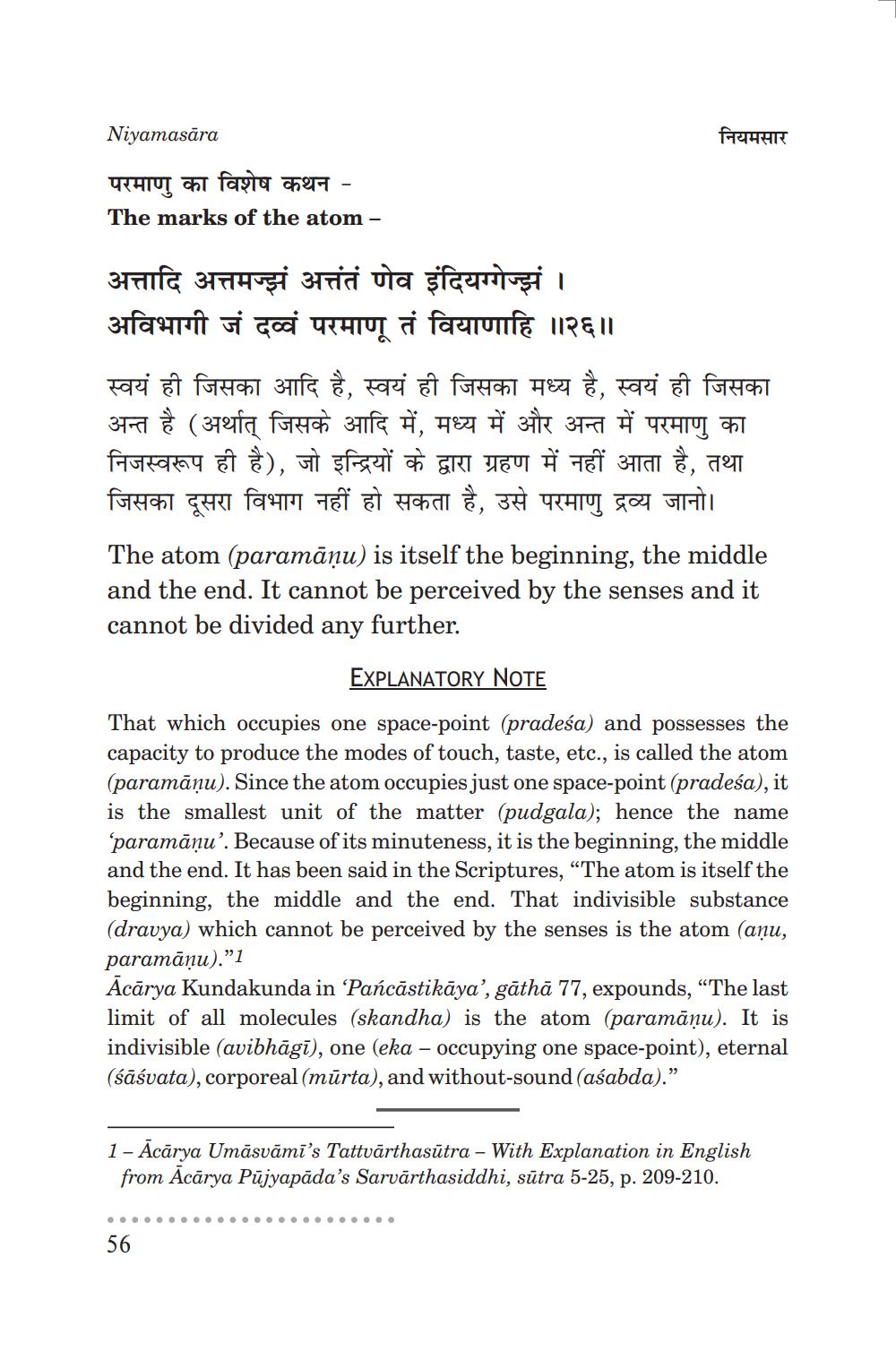________________
Niyamasāra
नियमसार
परमाणु का विशेष कथन - The marks of the atom -
अत्तादि अत्तमझं अत्तंतं णेव इंदियग्गेज्झं । अविभागी जं दव्वं परमाणू तं वियाणाहि ॥२६॥ स्वयं ही जिसका आदि है, स्वयं ही जिसका मध्य है, स्वयं ही जिसका
अन्त है (अर्थात् जिसके आदि में, मध्य में और अन्त में परमाणु का निजस्वरूप ही है), जो इन्द्रियों के द्वारा ग्रहण में नहीं आता है, तथा जिसका दूसरा विभाग नहीं हो सकता है, उसे परमाणु द्रव्य जानो। The atom (paramāņu) is itself the beginning, the middle and the end. It cannot be perceived by the senses and it cannot be divided any further.
EXPLANATORY NOTE That which occupies one space-point (pradeśa) and possesses the capacity to produce the modes of touch, taste, etc., is called the atom (paramāņu). Since the atom occupies just one space-point (pradeśa), it is the smallest unit of the matter (pudgala); hence the name 'paramānu'. Because of its minuteness, it is the beginning, the middle and the end. It has been said in the Scriptures, "The atom is itself the beginning, the middle and the end. That indivisible substance (dravya) which cannot be perceived by the senses is the atom (aņu, paramānu)."1 Acārya Kundakunda in ‘Pańcāstikāya', gāthā 77, expounds, "The last limit of all molecules (skandha) is the atom (paramāņu). It is indivisible (avibhāgi), one (eka – occupying one space-point), eternal (śāśvata), corporeal (mūrta), and without-sound (asabda)."
1 - Acārya Umāsvāmi's Tattvārthasūtra - With Explanation in English from Acārya Pujyapāda's Sarvārthasiddhi, sutra 5-25, p. 209-210.




